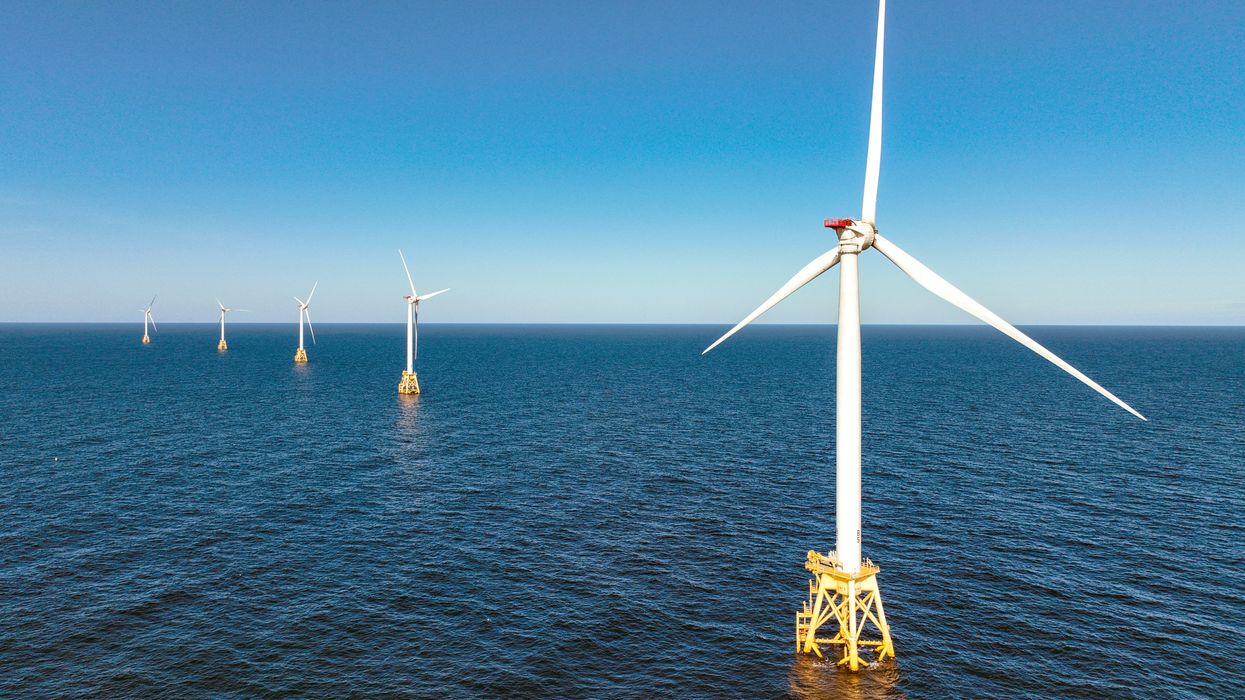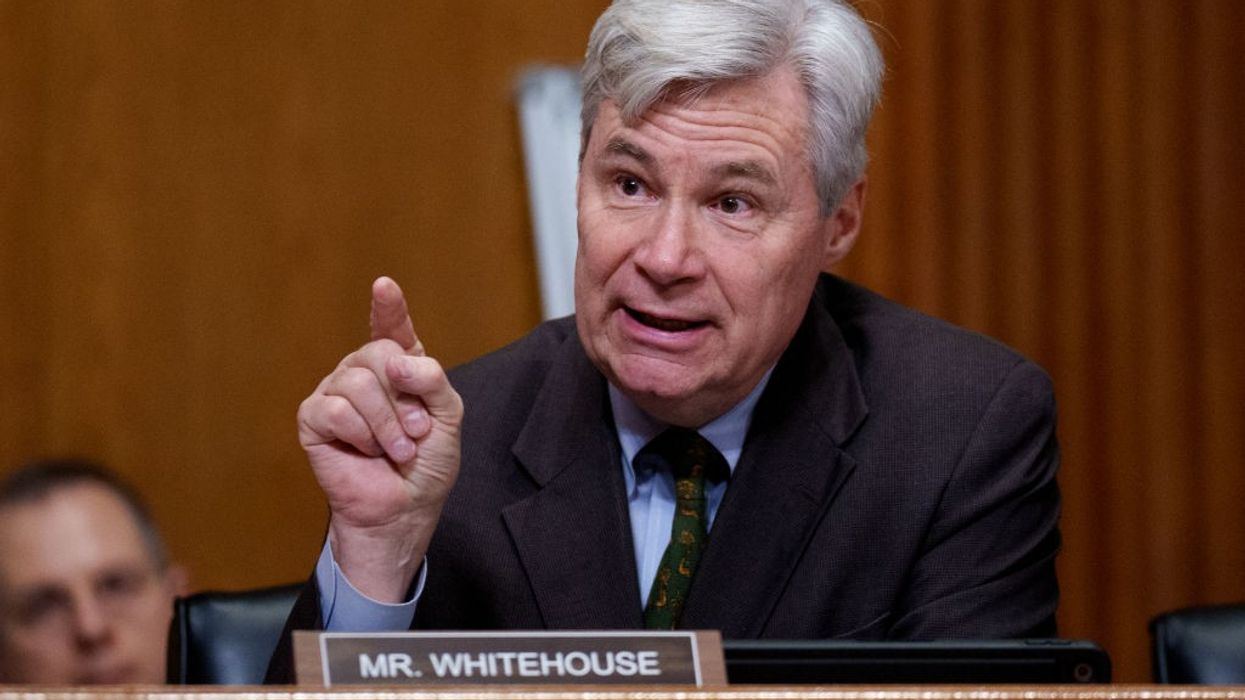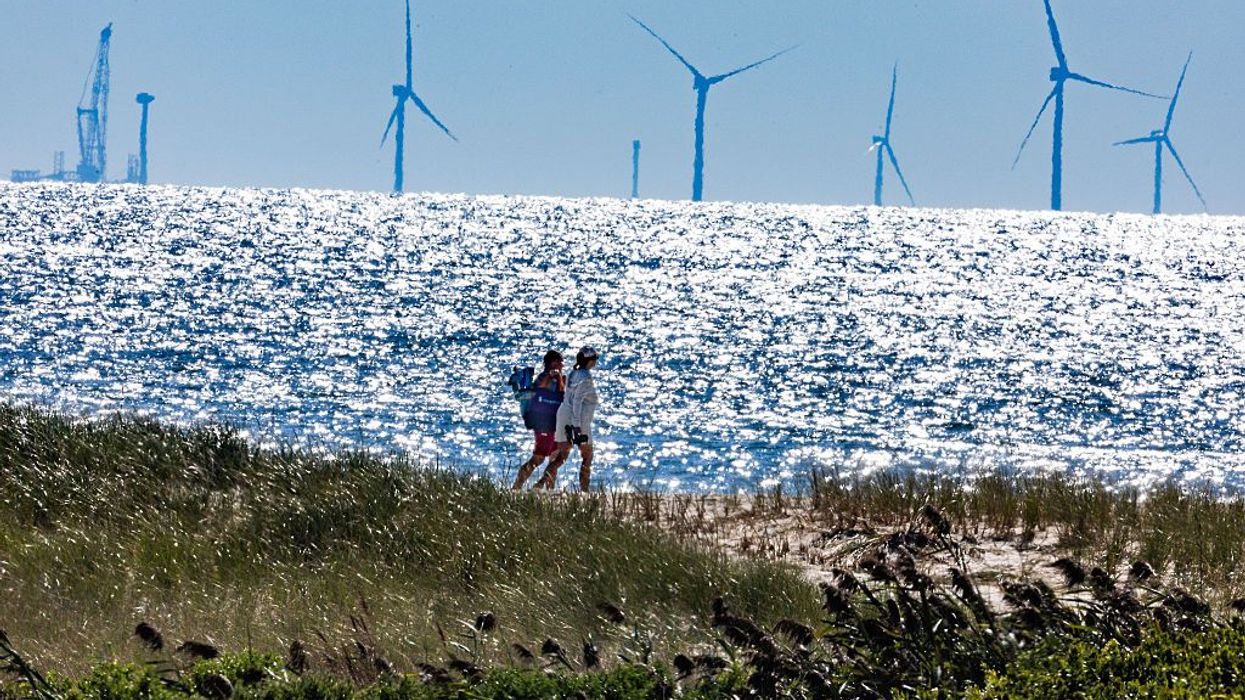Memo to Trump: Wind Power Is Freedom Power
The decision to halt new wind projects should leave no doubt in anyone’s mind as to who this administration actually cares about. Hint: It’s not you and me.
On Monday morning we woke up to the news that the Trump administration had halted five wind farms in the Northeastern USA, because they supposedly pose a “security risk”. The exact opposite is true: Not expanding wind power poses the security risk. Even the military had been calling climate change a “threat multiplier” for decades—until the Trump administration told them to stop considering climate change.
The truth is, wind power equals freedom power. Wind power means freedom from fossil fuels; freedom from extraction; freedom from pollution; freedom from billions of healthcare costs; freedom from dangerous jobs in coal, oil, and gas. Shutting down wind power projects equals shutting down all these freedoms. It equals shutting down your freedom and mine for the benefit of the freedom of a few fossil fuel billionaires and their wealth. The decision to halt these wind projects should leave no doubt in anyone’s mind as to who this administration actually cares about. Hint: it’s not you and me.
2026 is just days away. That leaves exactly four years to 2030, by which, scientists say, we must cut greenhouse gas emissions in half. Instead, as emissions continue to rise, the president of the most economically powerful country with the highest per capita emissions is not only taking away our very ability to protect ourselves from climate catastrophe. He is doubling down on exacerbating the problem by prioritizing fossil fuel expansion instead, also right here in the Northeast, and pressuring others to do the same. Thus actively reducing the likelihood of a livable future not only for all Americans but for humans around the world.
To be sure, this should not come as a surprise to anyone. As this administration is eagerly checking off the to-do lists of its “Project 2025,” it has done everything in its power since January to destroy any shred of American climate leadership. None of us who have been working tirelessly for climate action over the past years are surprised by the wrath behind this destruction. It fits perfectly with the fact that the administration is in bed with a desperate industry fighting for survival. They are desperate, because for years now, renewable energies have become cheaper and cheaper. In fact, they are already far cheaper than fossil fuel projects. The only thing that should still surprise us is how many people they are still able to lull into their myths of climate denial, given the mountains of evidence that are literally growing by the minute. Nobody has to look very far from their home to see an extreme weather disaster that was made worse by global warming.
Our 250th birthday is just the right moment for the people to wake up and stare down the fossil fuel industry and their political lackeys in power.
By halting these wind projects, the administration is therefore not only engaging in what Bill McKibben calls “solutions denial” (in Here Comes the Sun. The Last Chance for the Climate and a Fresh Chance for Civilization, 2025), it is also adding to our costs, thereby further threatening yet another freedom that is already greatly in peril: the affordability of our basic needs. In fact, with costs totaling $101.4 billion associated with extreme weather events, the first half of 2025 was the costliest ever. And the job losses are piling up as well.
The fact that a growing number of Americans is concerned about climate change is likely another reason for the speed at which this administration is proceeding with its dismantling of climate protection. They know the sleeping giant, i.e., the American people, once fully awakened, will not view these actions kindly.
You can gaslight people and spread lies for a few more years, but there will come the time when people start paying attention to the increasingly urgent warnings by those who understand the science best. People will wake up and understand that they are indeed being harmed by the greedy fossil fuel companies that brought us air pollution and black lung disease, and made us pay for the consequences, and not by renewable energy powered by the sun that is shining for free and will never send a bill.
The United States is a country built on the fight for freedom. Renewable energies are freedom energies. What stands between us and our freedoms therefore poses the true security risk. Our 250th birthday is just the right moment for the people to wake up and stare down the fossil fuel industry and their political lackeys in power. Because if they are not giving us liberty, they are giving us death.


